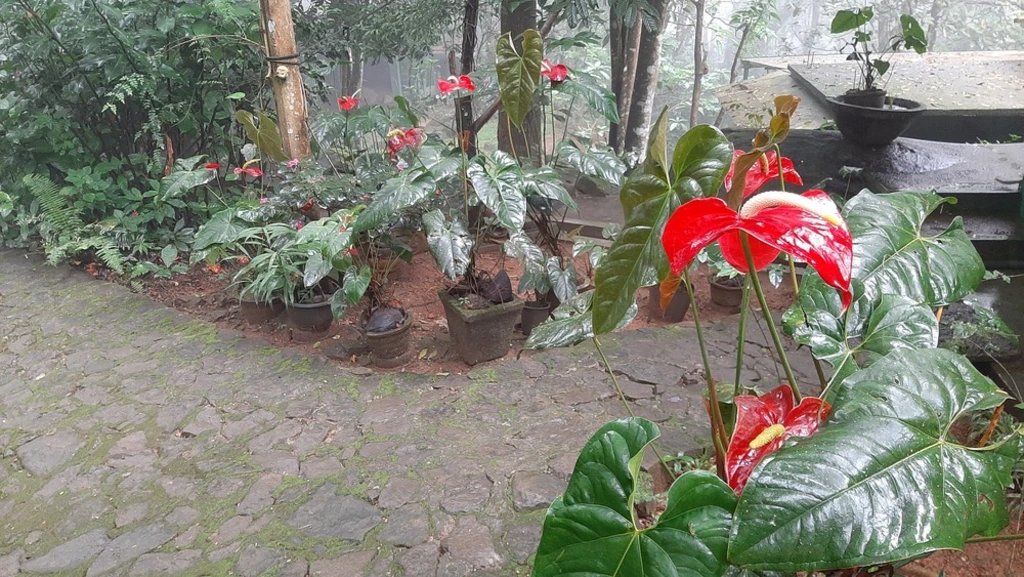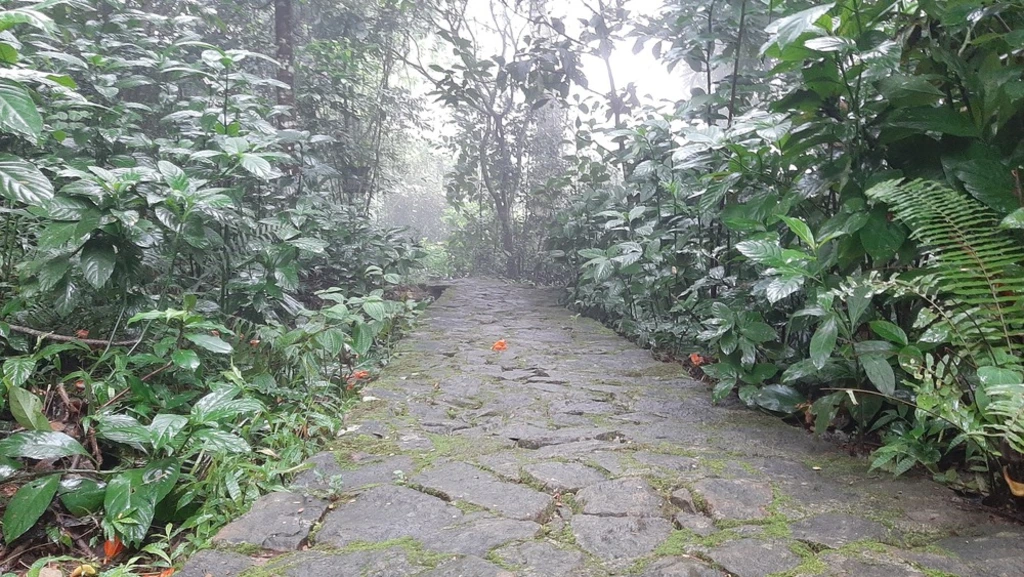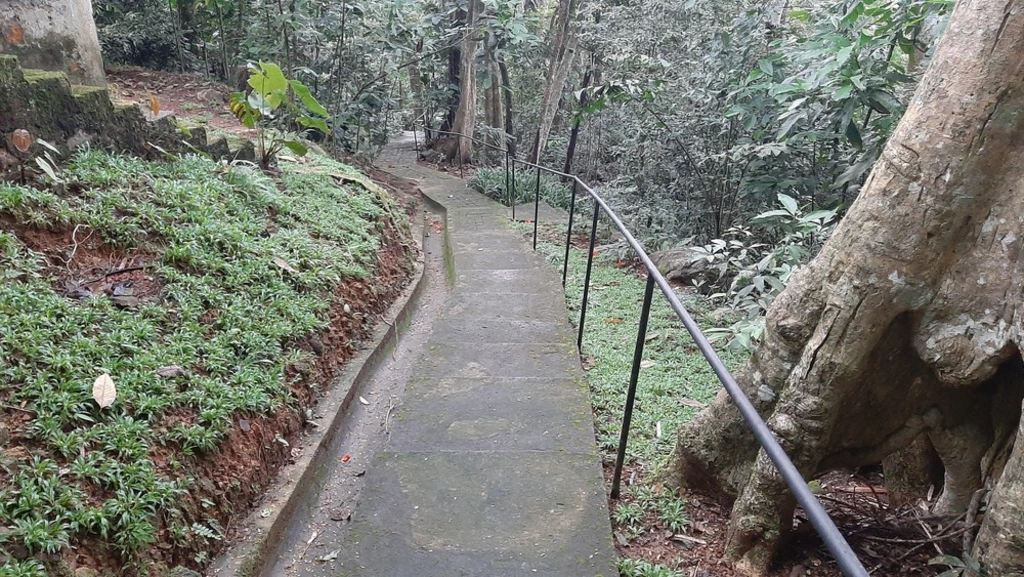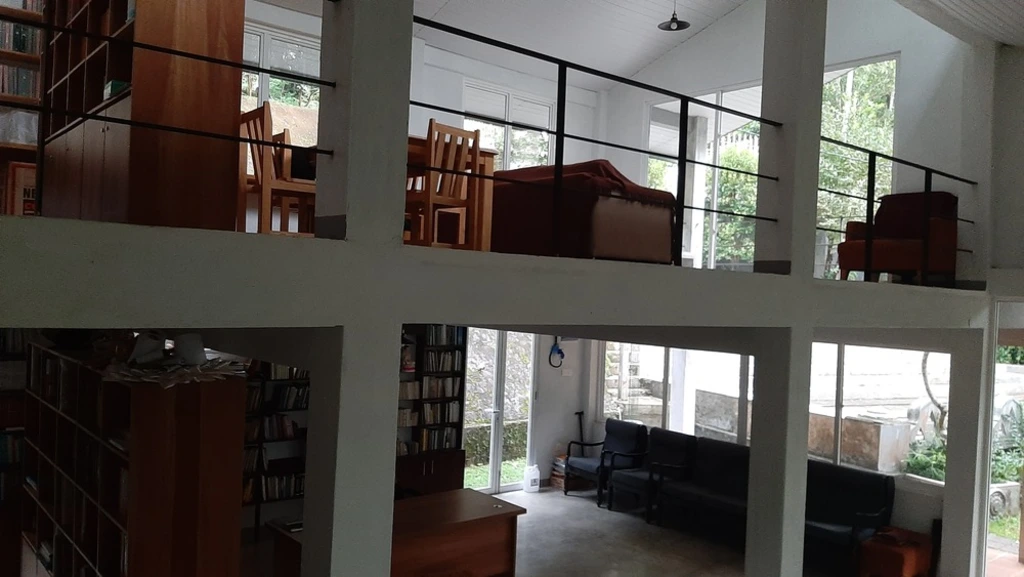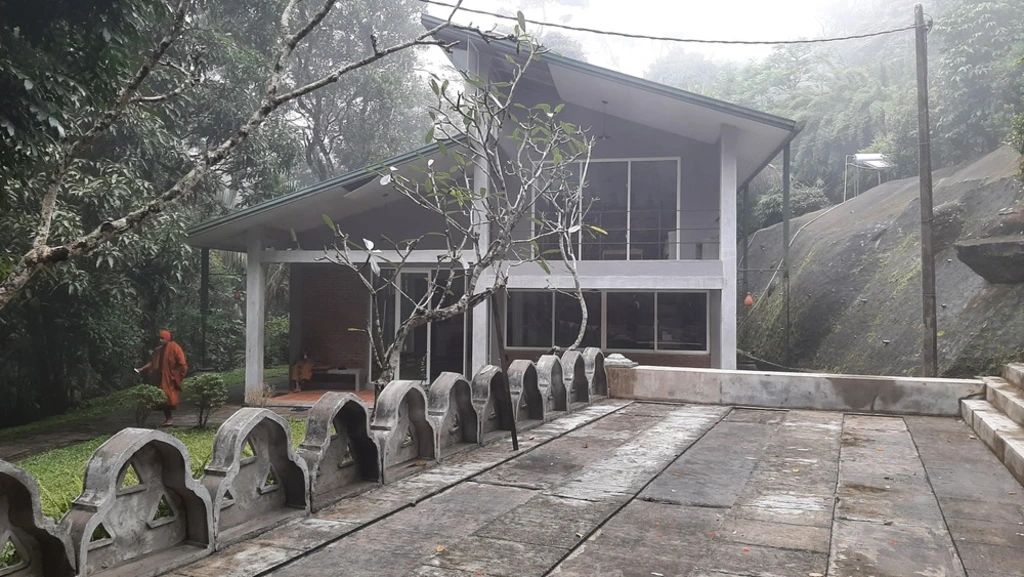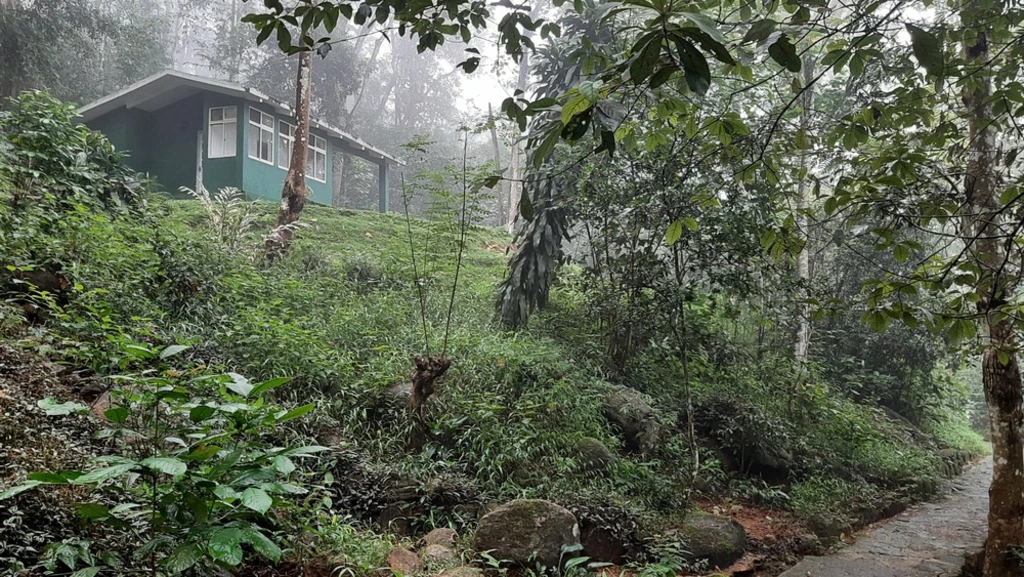A Brief Stay At Spring Hill Forest Monastery

The Wootens
One of the few places I have been to in Sri Lanka besides Na-Uyana and The International Institute of Theravāda (IIT) is Spring Hill Forest Monastery located in the Hantanna Mountains above Kandy. My two donors from Kaua’i, John and Nandini Wooten were visiting Kandy and I decided it would be good to take a break from the IIT scenery and climate with a great inspirational place for the Wootens to visit me.
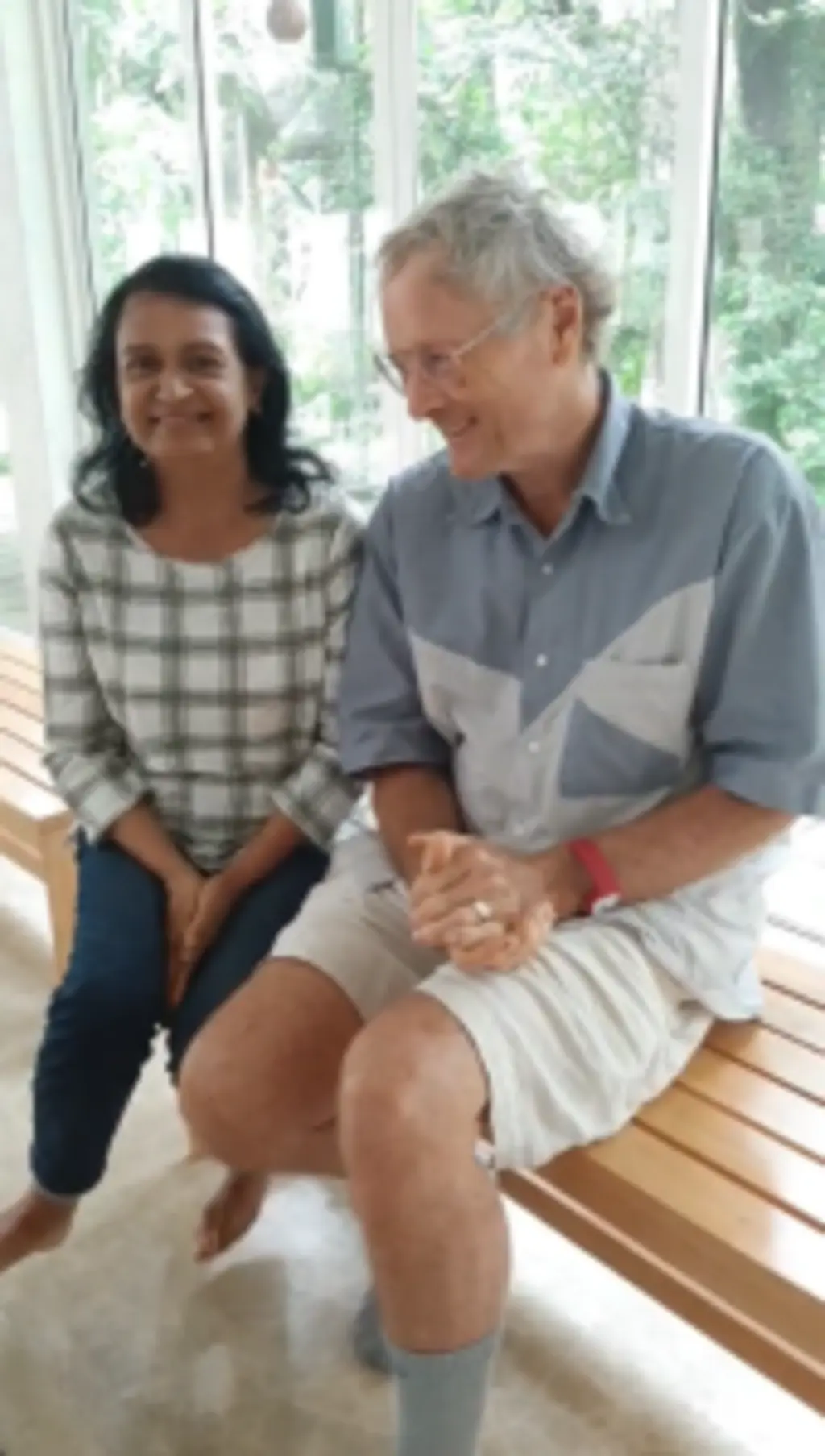
About Spring Hill Monastery
The monastery is located in the misty mountains alongside the tea plantations and it has a very cool climate, which is something that I really needed to escape the heat of IIT. Not only that, there are very few trees at IIT, but this monastery has an abundance of tall trees. While IIT gives a nice panoramic view across the fields, there is no comparison to the lush, misty and temperate forest that surrounds me now.
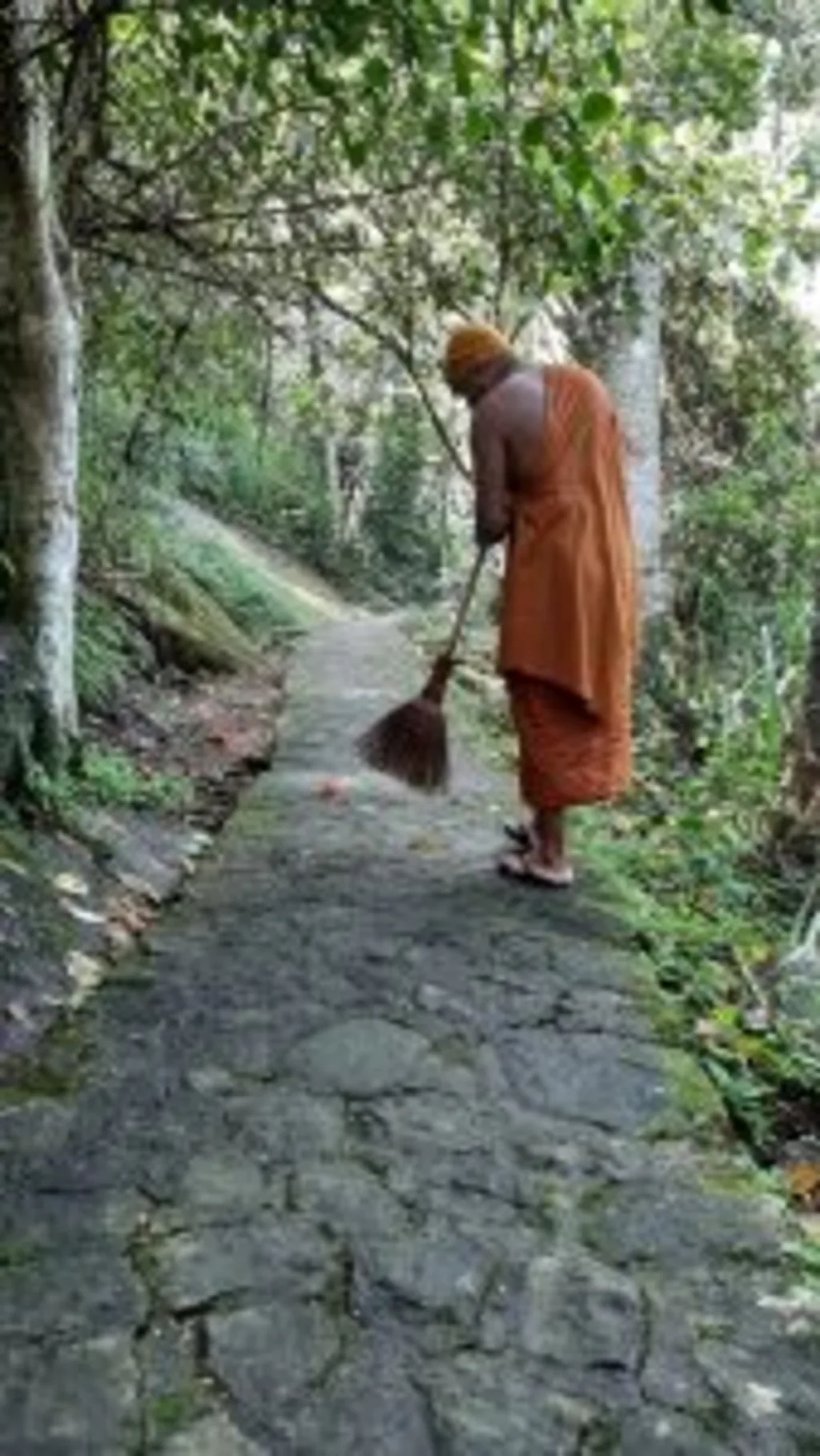
The monastery was started by two brothers (of the same family) who are monks (Ven. Santamanasa and Rev. Ariyagavesi) along with their parents. The mother cooked most of the food while the father managed most of the construction. The brothers spend most of their time near Colombo but visit their monastery from time to time. During my visit to Spring Hill then, their whole family was visiting India so I didn’t get a chance to say hello. However, I was given a warm reception upon my arrival by the current resident monks. There were six monks when I arrived and one recently left. The monastery is quite full these days, but since I planned well in advance and my desired dates were right after the Buddhist Rainy Season, I was able to get short-term accommodation. Below are some scenes from the monastery landscape.
The Discovery
I first found out about this place shortly after my re-ordination in Sri Lanka during a Doctor’s visit, probably to see the ear nose and throat doctor who was “friendly” to the monks at that time. When you go for a doctor’s visit in the Na-Uyana van, it is often packed with 8-10 monks who have separate and different things to do. Normally we wait in the van while each monk does his task, but there was this one time when it was arranged for us to comfortably wait at Spring Hill Forest Monastery while the other monks did their tasks. The drive up the mountain was so picturesque and the actual monastery was also equally good. I was so impressed with the tall trees and views when I first came that I vowed to come back, and that is what I have done over the years. Every once in a while, when the time was right, I took my clergy bus coupons and went to Sprint Hill Forest Monastery. Below is a picture from maybe 2009 when my brother visited me at this same monastery. There are pictures of the library below too.

These days I am more senior and Ven Maggavihari was so kind to arrange transport for me. The trip was fast and comfortable. Upon my arrival, I was greeted well and assigned a nice kuti which was a double barrel kuṭi design with two rooms on each side of a mini meditation hall. The other monk, Ven Dhammalankara, is a longtime resident which I have known over the years during the course of my visits. We get along well and we rarely notice each other. Below are interior pictures of my kuti.
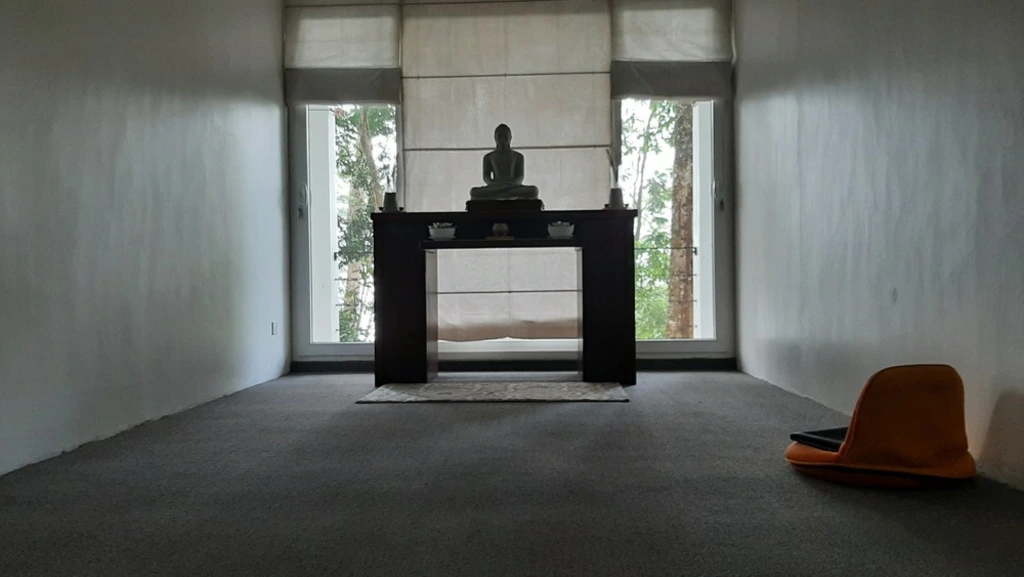
Mini meditation hall

view of room
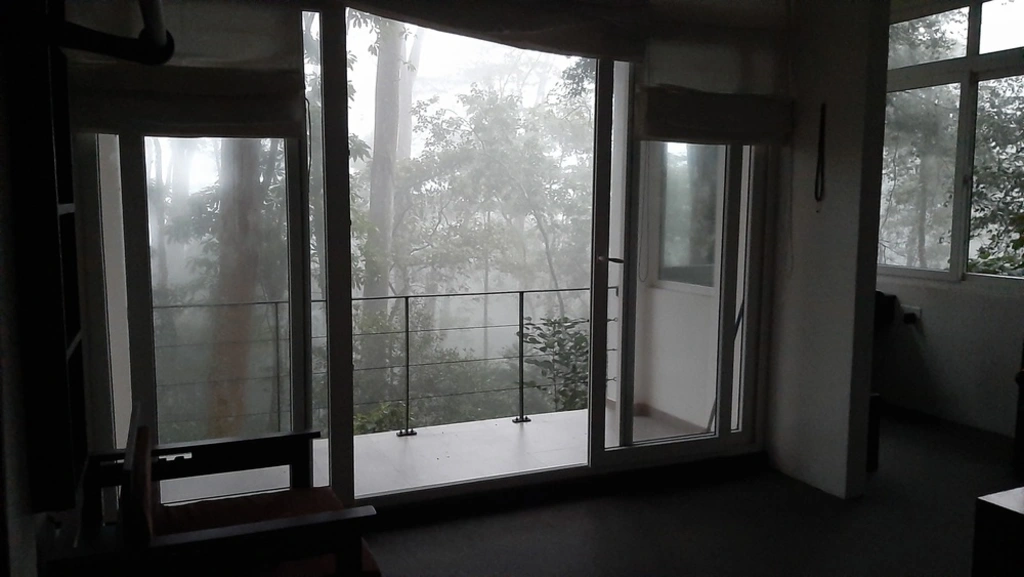
Misty view at dusk
The Leeches
Every monastery has its faults. One of the faults is leeches, and many of them too! Even though the pathways are lined with cemented rocks or bricks, over time, the moss has grown and the leeches are able to mount after waiting for an unsuspecting or suspecting monk on foot. When you get a leech on you, you need patience and you need to gently rub the leech until it starts moving. When the head and toe are close together, they can be safely flicked off. Pulling the leeches off when they are still attached can cause the tooth to be left embedded inside your skin. It is not good for you and certainly not good for the leech. A monastic friend says that putting balm on the skin prevents them from entering. Another says that Dettol soap works as well. Because leeches have only gotten on me a few times, I have yet to use either and just rely on the technique below.
The climate is very cold here, especially at night. I tend to stay away from blankets. I learned in the Boy Scouts that thin layers work well for keeping warm and I still use that technique today. I use my folded upper robe, extra lower robe, and folded double robe, and I keep warm quite well if I have a foam mattress. This is also true for Pyin Oo Lwin, Myanmar where the temperature gets down to 12 C at night. Besides the cold temperatures, the climate is also very rainy here. There is not much sunlight that comes in through the mountain and trees, so it gets mossy and damp both inside and outside quite quickly. Never the less, it feels so remote here and I welcome such climate compared to IIT. Below are pictures of some of the exterior kutis.
The meals are well prepared and there is now a stable helper who helps prepare the meals. There were times when the helper was not always available. Below is a picture of the breakfast table.
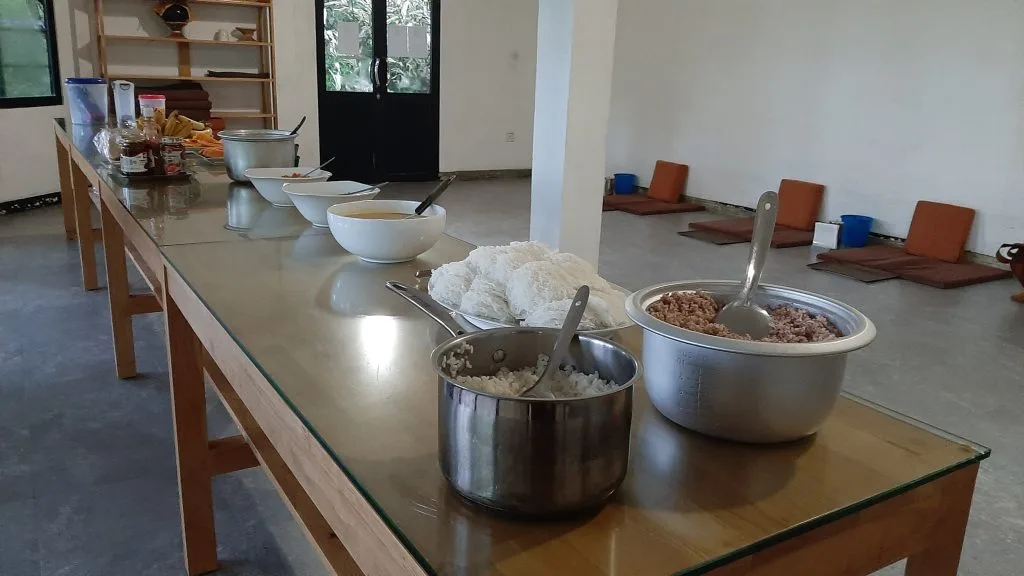
Dhamma Talk On The First Day
As foreigners who do not speak the native language, we rarely get a chance to teach Dhamma to people face to face. However, I was invited to an outside meal by a German monk who was also visiting the monastery. There were some supporters who sponsored a German nun and they wanted to unofficially celebrate the end of the rainy season. There were maybe 15 people in attendance that day. Although I am not supportive of the modern “woke” Theravāda “bhikkhuni” movement, I attended because I was told she was not a bhikkhuni. When I got there I asked a few questions about her ordination. The nun decided not to become a bhikkhuni because she knows that there is very bad kamma created if she ignores and disrespects the heavy rules related to sleeping alone and traveling alone. By not becoming a bhikkhuni, she is free from those rules and has more time in solitude and for practice while still giving respect to the Buddha. Because of this proper monastic attitude, I gave a Dhamma discussion based on how important it is to support both female and male monastics, how important it is to practice, how rare the human birth is, and the importance to go forth (into the monastic life). Furthermore, since there are no guarantees of being a human let alone a man, let alone taking Buddhism as a full time livelihood, it is important that they give and support this female monastic (which they have already been doing), keeping in mind all the aspects of samsara, and cause and effect during the acts of support. I enjoyed myself dearly while giving this talk and I was able to speak relaxed with a free flow style while still keeping the topic profound. I think the people enjoyed the talk as well. While some pictures were taken by the locals, I do not have any to show you.
It has been a lovely stay. I will make my way back to IIT later today using my Clergy Bus Coupon Book to take a government bus back home. IIT will arrange my pickup at the nearest city called Anamaduwa and then I will be back for a few more days. I would like to stay longer, however, I was invited to go to Cambodia on the 22nd of November and I will need to prepare for that with the group of monks who are going. I leave you with a small summary poem.
Summary Poem:
In Sri Lanka’s misty peaks, a monastery stands tall,
Spring Hill Forest, where serenity calls.
Amidst lush greenery and tranquil air,
Monks find solitude, their homes to share.
A haven from heat and urban clamor,
Where nature’s embrace soothes every tremor.
Tall trees whisper secrets to the breeze,
As monks meditate, finding inner peace.
A place of learning, where wisdom takes hold,
Dhamma’s teachings, removing sufferings of old.
Monks delve into scriptures, seeking enlightenment,
Their minds ablaze like a spiritual light vent.
A refuge from worldly woes, a sanctuary true,
Spring Hill Forest, where spirits renew.
Amidst the mountains, a haven of grace,
Where inner peace finds its rightful place.
Click below to search subjects
